
“Icy Rest” by Cristina Mittermeier.
“A couple of crabeater seals rest on a bed of ice under the Antarctic sun, framed by a couple of overturned icebergs whose surface displays the scars and dimples of a long journey at sea before arriving in this shallow bay to end their days.”
One hundred of the world’s top photographers have come together for the good of the ocean. Put together by renowned conservation photographers Paul Nicklen, Cristina Mittermeier, and Chase Teron, 100 for the Ocean is a remarkable opportunity to purchase high-quality photography while helping the planet. This print fundraiser is a limited-time opportunity to get fine art photography at an affordable price. And the best thing is, all of the profits go to ocean research and advocacy charities.
Curated by Kathy Moran, co-founder of Moran Griffin, Inc. and former National Geographic deputy director of photography, the sale brings together some of today’s best photography talent. Readers of My Modern Met will see many familiar names on the list, like Joel Sartore, Robert Irwin, Pete Sousa, and Chris Burkard.
“It’s a real privilege to have so many amazing photographers and a curator like Kathy Moran, to band together to support this,” says Nicklen, co-founder of SeaLegacy and 100 for the Ocean. “Being a photographer is often a solitary pursuit, but to have communities come together like this, all for the purpose of good, to amplify and help grow other organizations, is a really beautiful thing. It reinforces the importance of the ocean in everyone’s lives.”
All of the prints start at just $100, and with so much work to choose from, it would be difficult for anyone to narrow the field down to one purchase. From incredible glimpses of ocean life to photographs that show the daily lives of polar bears, the photographs are a unique way to see the importance of the ocean for all living creatures.
The charities that will benefit from the sale were nominated by the photographers themselves. These incredible organizations are often underfunded and understaffed, which makes the donations they receive all the more important. The non-profits include Whale Guardians, which safeguards whales against shipping strikes; Coastal First Nations, which protects and restores ecosystems that are then managed sustainably by members of First Nations; and Por el Mar (For the Ocean), an organization based in Argentina that brings together scientists, policymakers, and activists to restore the ocean.
Scroll down to see a preview of some prints for sale, and check out the entire catalog on the 100 for the Ocean website. The sale runs through May 31, 2023, so take advantage of the opportunity while you still can.
100 for the Ocean is a fine art photography print sale that has brought together 100 top photographers.
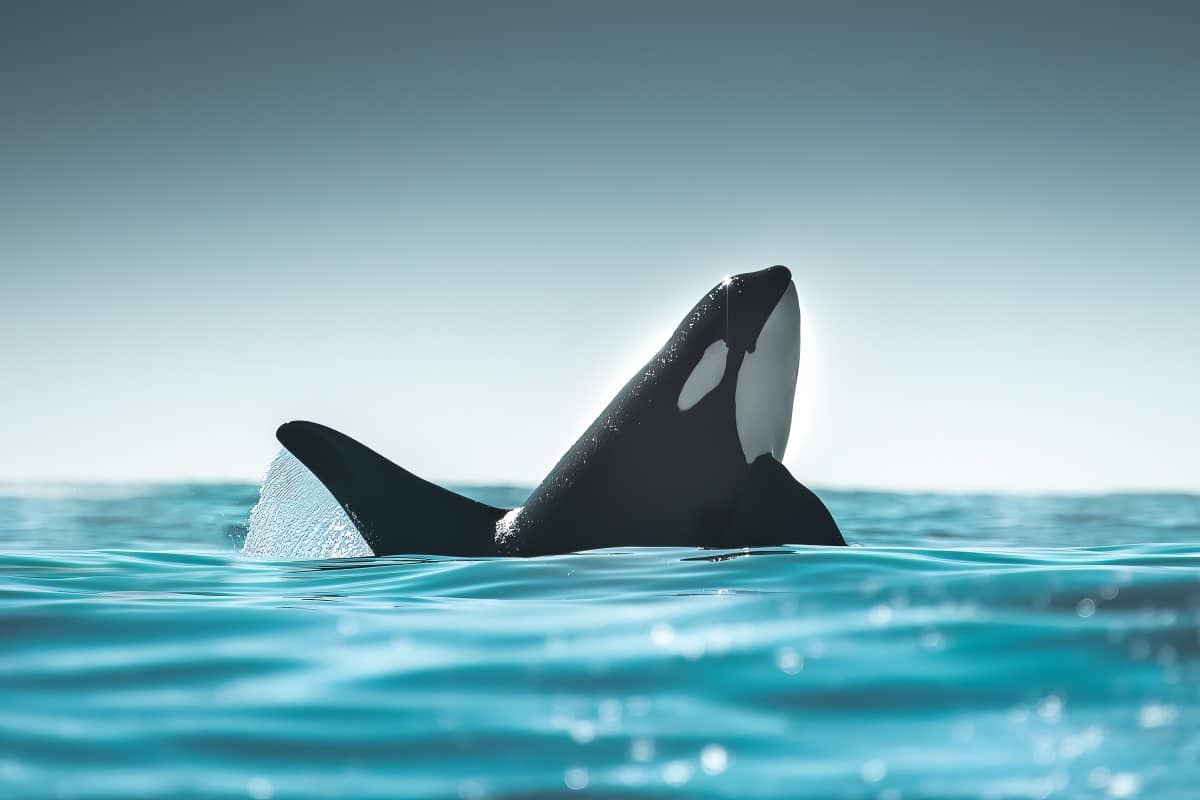
“Freedom” by Kris Gillies.
“This image was taken while fishing off the coast of Vancouver Island. After spotting some large black fins in the distance, we pulled up our lines and motored across, hoping to collect some ID photos. When the main group was just coming into focus, two orcas that had split off from the main group without us realizing surfaced 200m from our port bow. We quickly shut off the engine and I grabbed my camera and fired away, praying the autofocus would lock – and luckily for me, it did! J38 broke through the water at the crest of a large swell as our boat bottomed out at the base of another, allowing me to capture this image from such a low angle. For me, this image captures this whale experiencing a moment of true freedom, a whale whose population is diminishing, a whale who is struggling to find food and to even communicate with its family in the congested Salish Sea. Freedom in the open ocean.”
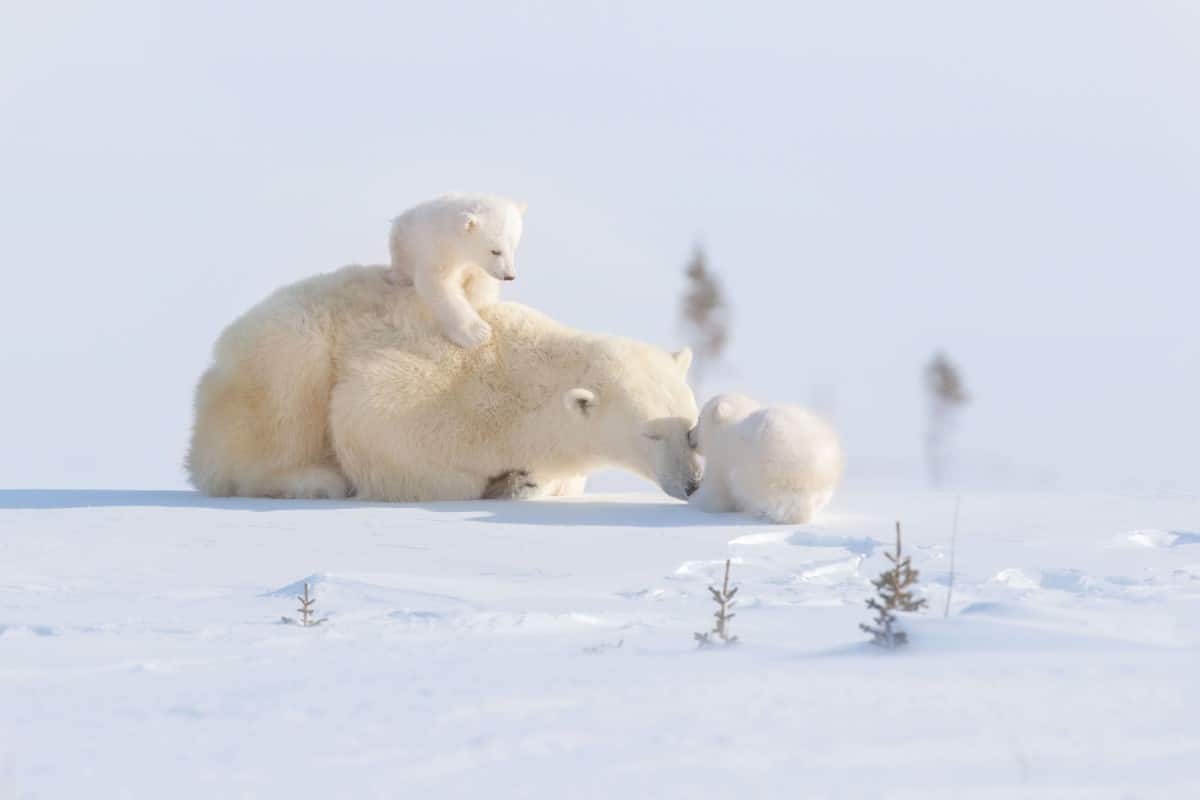
“A Mother’s Love” by Ruth Elwell Steck
“Being able to spend time with this amazing family as she helped her cubs get ready for their long journey to the ice was incredible. The love and care she had for them is shown throughout the images captured.”
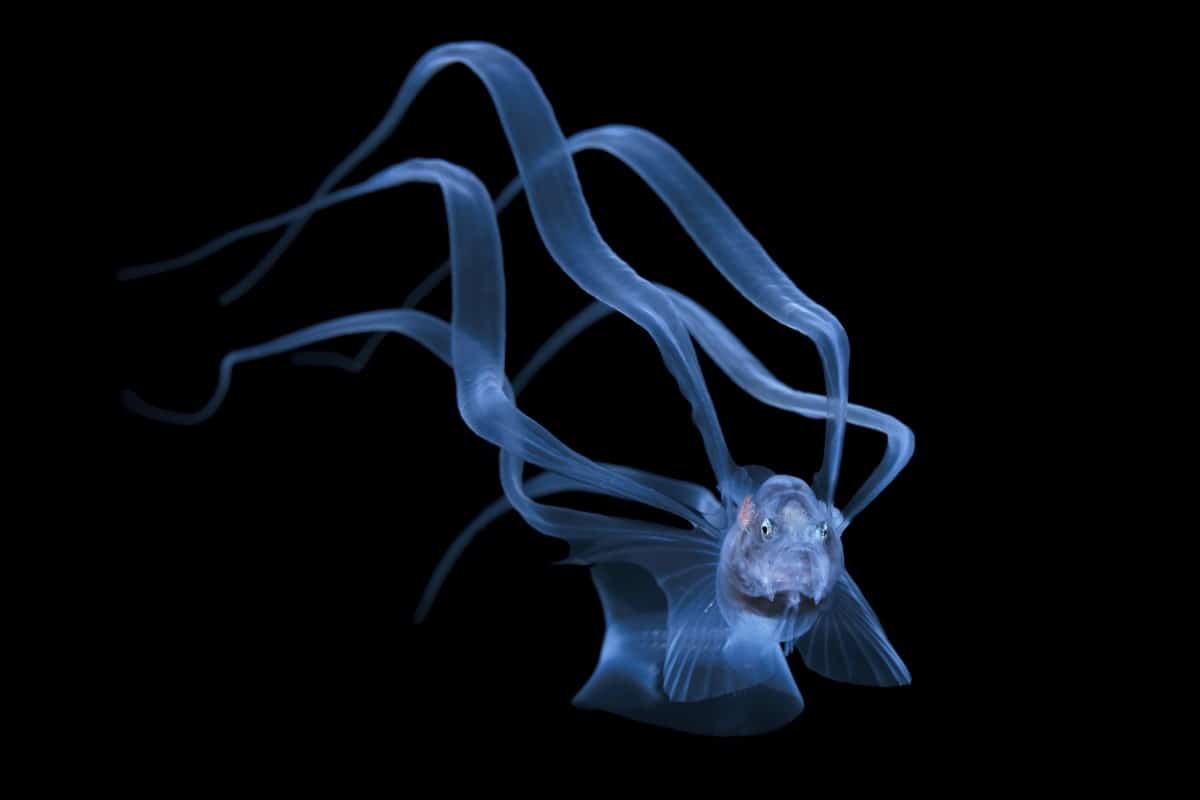
“Bony-eared Assfish larva” by Steven Kovacs.
Florida Blackwater, 2021
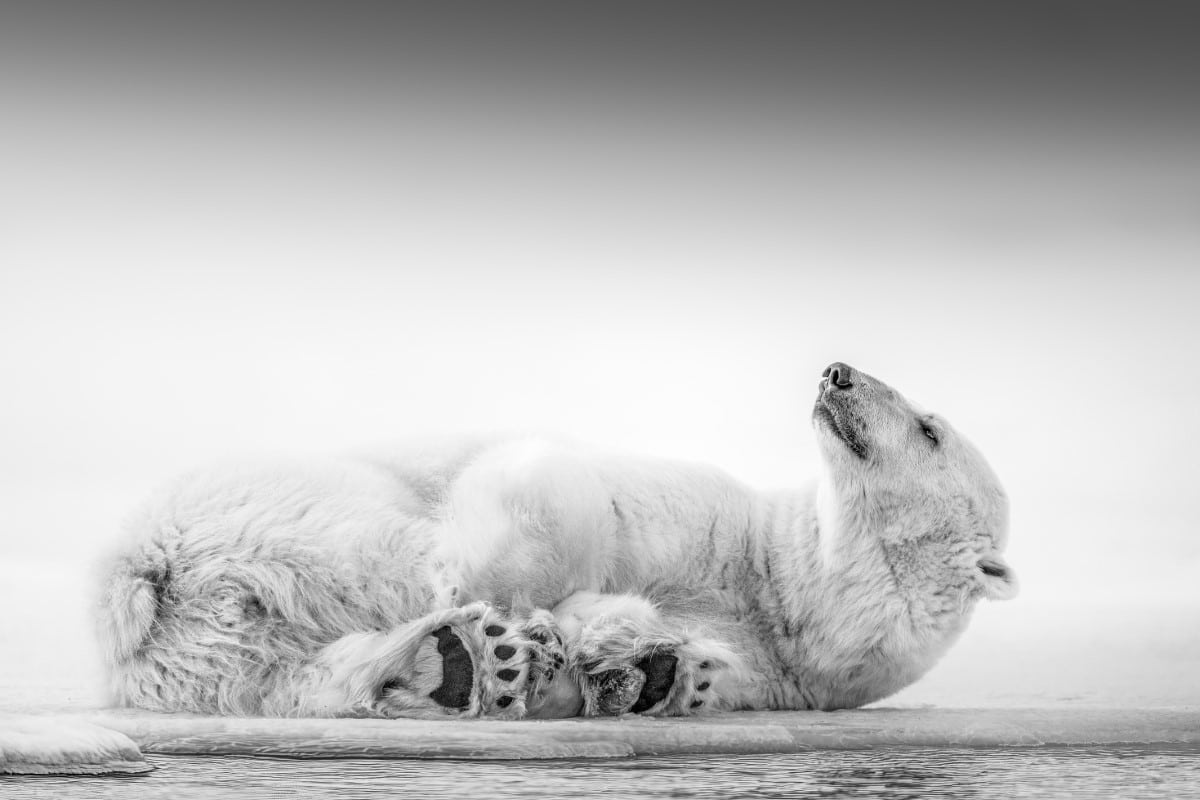
“Sea Bear” by Chase Teron.
“As Arctic temperatures rise, the polar bears in Svalbard are facing a new reality—a world without multi-year pack ice. With the ice melting earlier each year, their hunting grounds are shrinking, leaving them struggling to find food and survive. Witness the heartbreaking struggle of these magnificent creatures as they fight to adapt to a rapidly changing environment. Climate change is the primary driver of the loss of sea ice, which polar bears rely on for hunting and breeding. By reducing our carbon emissions through lifestyle changes, using renewable energy sources, and supporting policies that address climate change, we can help slow the rate of global warming and preserve the polar bear’s habitat and preserve the planet for all living things. Additionally, supporting conservation organizations and policies that protect polar bears and their habitat can also make a significant impact in ensuring their survival. Together, we can take action to protect these magnificent creatures and preserve the Arctic ecosystem for generations to come.”
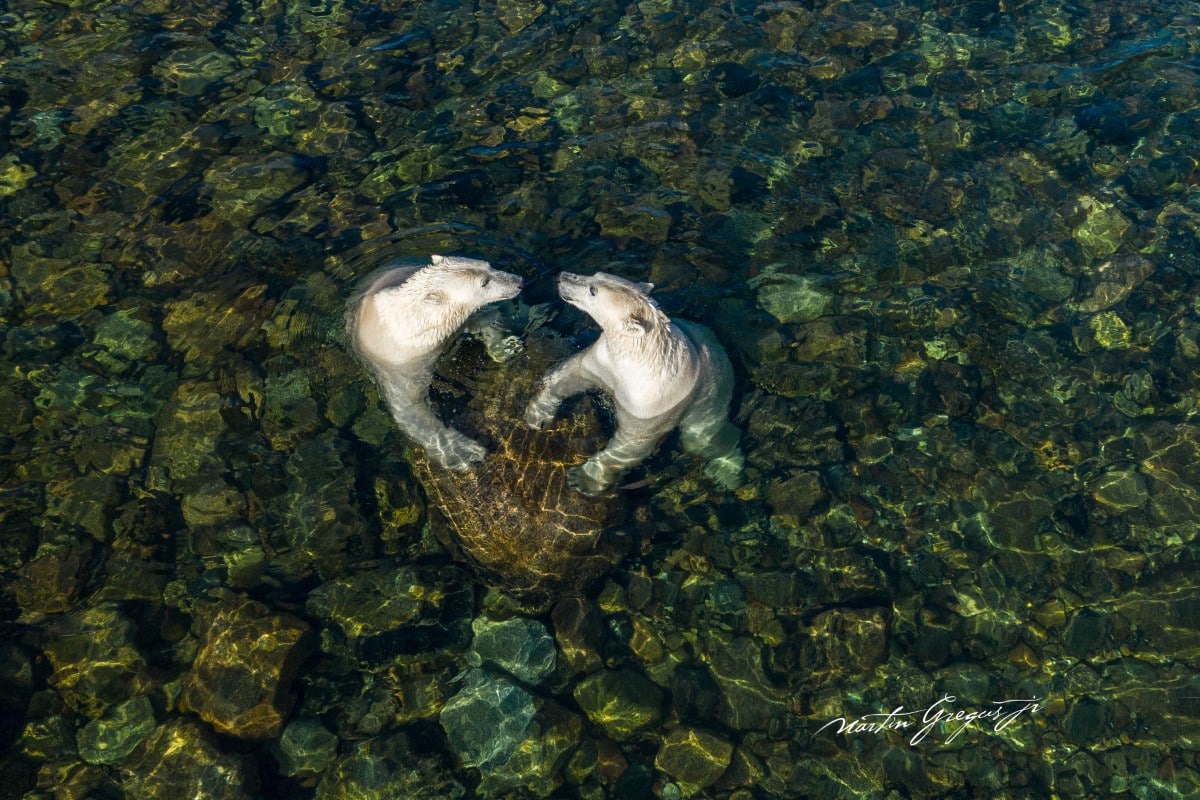
“Lovers” by Martin Gregus.
“Using a drone to capture this moment, I love how the heart shape symbolizes the apparent sibling affection between them and the love we as people owe to the natural world.”
All of the profits will go to select charities and organizations that are working to preserve our oceans.

“Snowy Owl” by Michelle Valberg.
“Snowy owls are magnificent creatures. With their piercing yellow eyes, stunning white feathers, and incredible size, they are a true wonder of nature. These beautiful birds are perfectly adapted to their harsh Arctic environments, with unique characteristics such as hearing abilities so keen that they can hear their prey moving under the snow from far away. Beyond their beauty and abilities, snowy owls are important indicators of the health of our planet’s ecosystems. Their presence in the Arctic is a sign of a healthy and thriving ecosystem and a reminder of the importance of protecting our planet for generations to come. Let’s celebrate these fantastic creatures and work together to protect them and their habitats!”
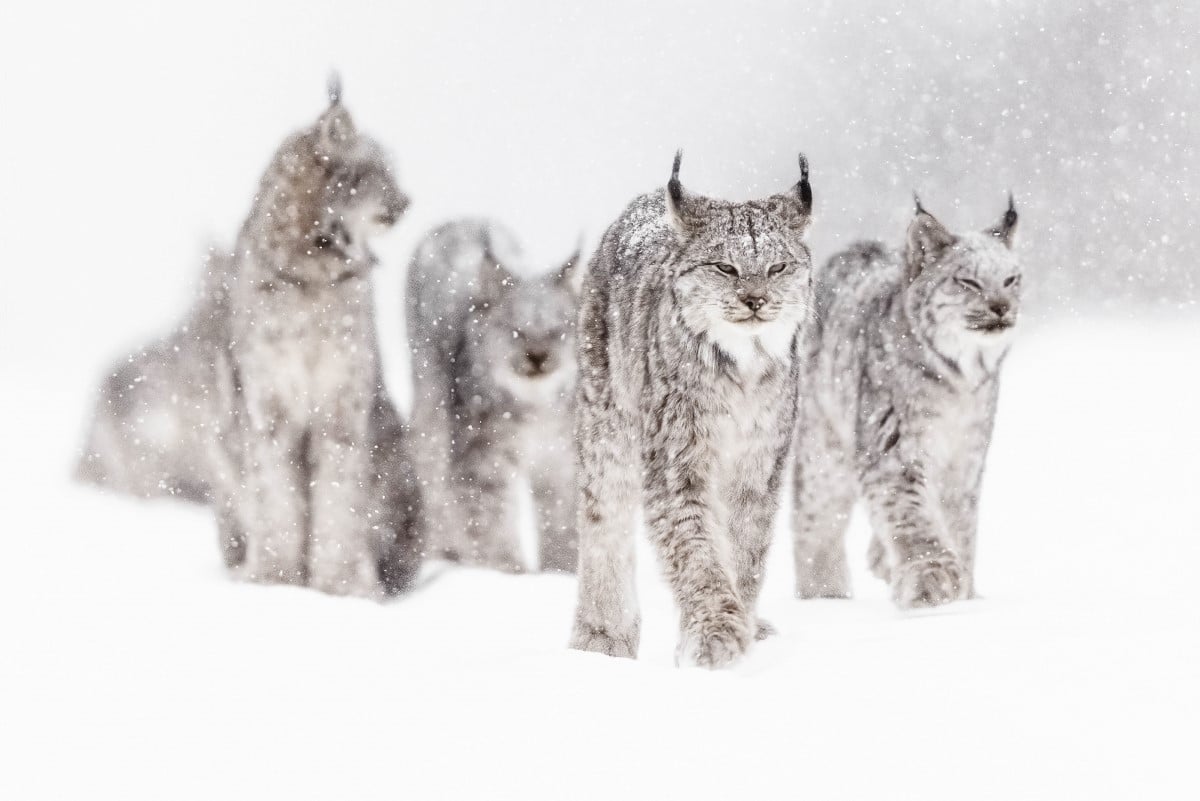
“Strong Together” by Jean Simon Begin.
“The blizzard blocks my view. At the intersection of a snow road and a snowmobile trail, I notice from the corner of my eye a black spot in the distance. I walk about twenty meters and decide to turn back. What if it was an animal? Anyway, I have plenty of time. When I get to the trail, I realize that it is a lynx! It is quite far, about 50 meters from me. I lay down on the ground with my 600mm and wait. Suddenly, a small lynx comes out of the wood and joins him, then another and another and another! To finish the parade, another adult sits with them. I have a total of six lynx in front of me. They see me, but don’t move, I wait, and that’s when the most unlikely of situations happens. The small clan starts to walk in my direction. Following the mother, they follow one another, all in line, they advance about ten meters and sit down, then start again. The big family is now a few meters away from me. The other adult seems to be a male who is interested in the female. He circles around them and seems to be looking for prey. The six lynxes are so close to me that I can’t take any pictures and I don’t have my cell phone to film the scene. So I am forced to live the moment. It is in itself, the most beautiful obligation that life has imposed on me. Around me four small kittens and two adults are calmly posed. All at a distance of one meter from each other, they look in opposite directions. My heart is pounding, I can hear it pulsing in my head. I try to calm myself. I can’t imagine what is happening to me. I feel like I am dreaming. I’m so close to them and they don’t care that I’m here. I let them pass around me, stand still for a moment, and then get up to join them further away. The mother and the four small ones enter the forest. I follow them by a parallel way. The male, him, comes to join me. He walks a few meters from me. He looks in their direction. I walk next to a lynx, I don’t even take a picture anymore, I live the moment. The family remains deeply hidden in the forest. The male goes back and forth from the forest to the path. I have the impression that he is waiting for the little clan to move a hare so that he can catch it. This is a tactic of the lynx mothers that several people have already observed. The whole thing seems very plausible to me. Then, the male goes towards the forest which is opposite to them. I try to follow him a little, however, the snow is so deep that I find myself buried up to my hips. The lynxes, them, literally float on this soft snow.”
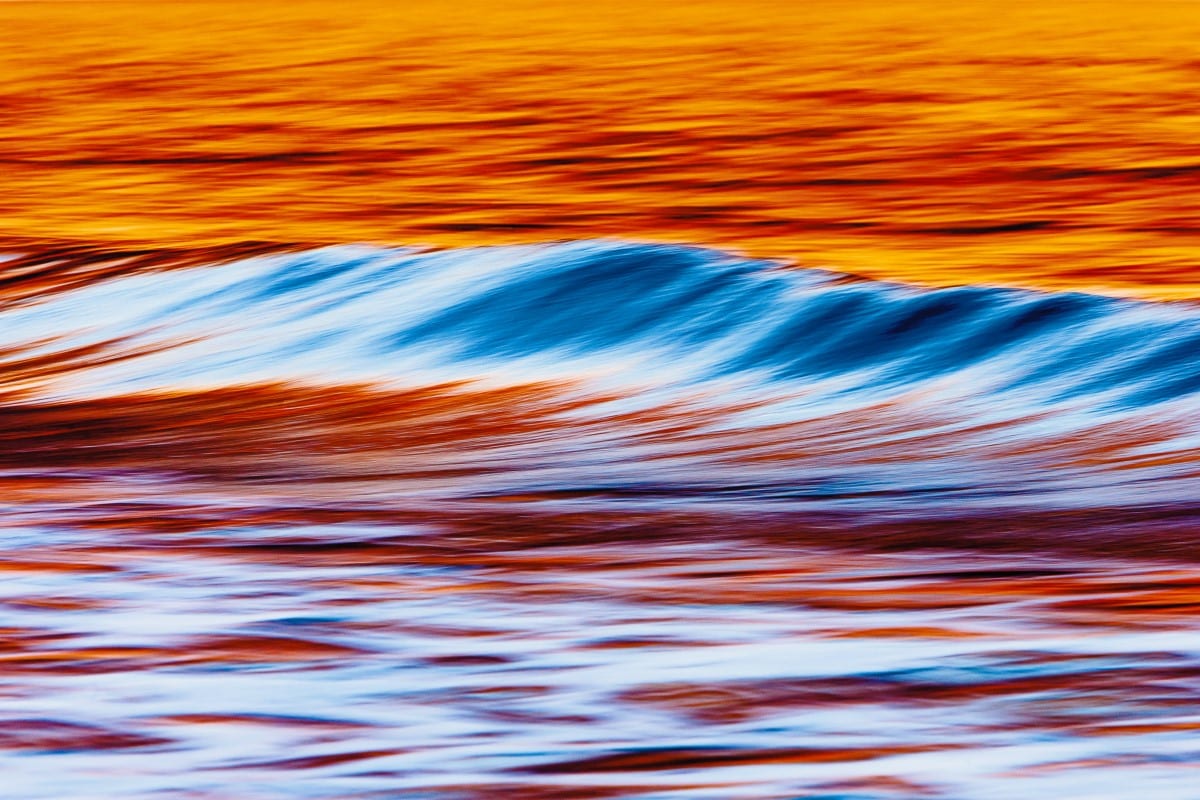
“Wildfire Wave” by Ben Moon.
“Smoke from a wildfire burning nearby filtered the harsh midday light, transforming color on the waves into kaleidoscopic tones.”

“The Last Stand” by Fredrick Granath.
“Adrift in a changing world, polar bears face an uncertain future as their icy kingdom melts away. Climate change is stealing their hunting grounds, leaving these majestic creatures vulnerable and struggling to survive. Let’s stand together, reduce our carbon footprint, and fight for their tomorrow.”
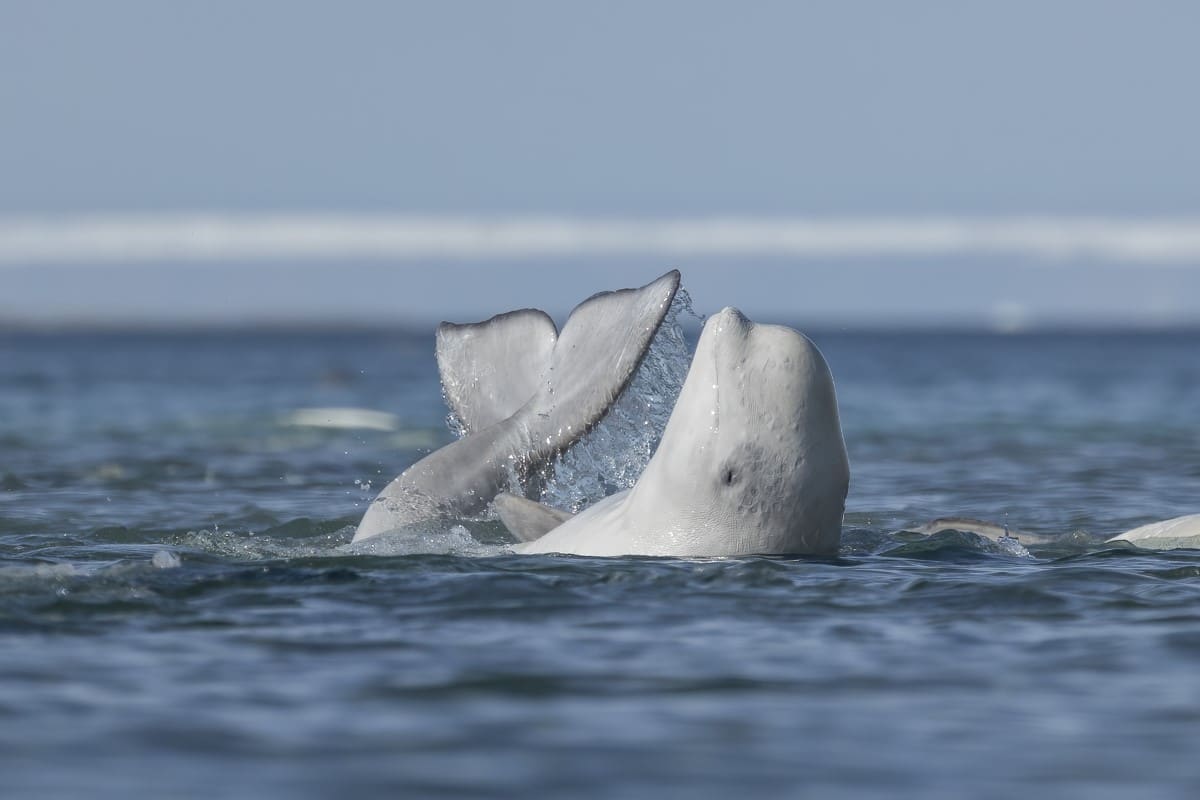
“Naluark” by Mark Williams
“Naluark (nah-LOO-ahrk) in Inuktitut means ‘whitened skin’. Mark took this image in a remote inlet along the Northwest Passage, where hundreds of Belugas come to socialize and exfoliate their white skin in the shallow river mouths.
Belugas are extremely sociable mammals; they live, hunt, and migrate together in pods, sometimes quite small but can range into the hundreds. I knew from their nickname ‘canaries of the sea’ that they were very vocal and that the vertebrae in their necks were not fused together, giving them the unusual ability to turn its head but to see and hear this in real life was fascinating.
They also have a very bulbous forehead (called a melon), and this is capable of changing shape. This allows them to make different sounds but also facial expressions.
They are closely related to the Narwhal, being one of the two members of the Monodontidae family.
Threats to beluga whales include climate change, hunting, oil and gas development, and industrial and urban pollution. The warming climate also means there is less ice, and predators such as killer whales may be able to get to areas where they were once safe from predation.”
The prints start at $100 and are available for purchase through May 31, 2023.
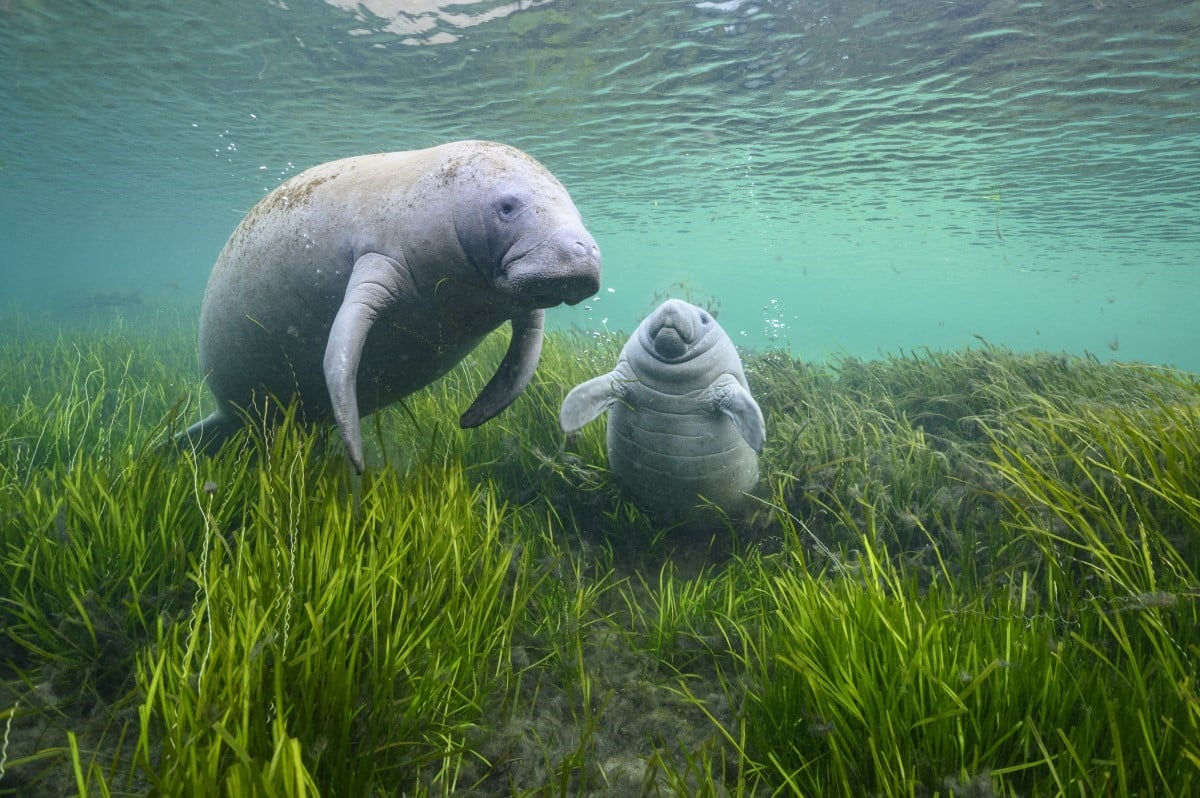
“Hope” by Jason Gulley.
“A manatee mother and her calf laze in eelgrass, an important manatee food source, in Florida’s Crystal River. Just a few years ago, eelgrass had all but disappeared from Crystal River. Decades of nutrient pollution from sewage and fertilizer triggered algae blooms that choked out the grasses and turned Crystal River’s once air-clear water murky brown. To stem the decline, local residents banded together with state agencies and private companies to fix their water. By the end of 2022, they had removed 300 million pounds of nutrient pollution from the bottom of Crystal River and planted more than 350,000 eelgrass seedlings by hand. As the eelgrasses matured and flourished, the water cleared and the abundant food has made Crystal River a year-round home for a growing number of manatees.”
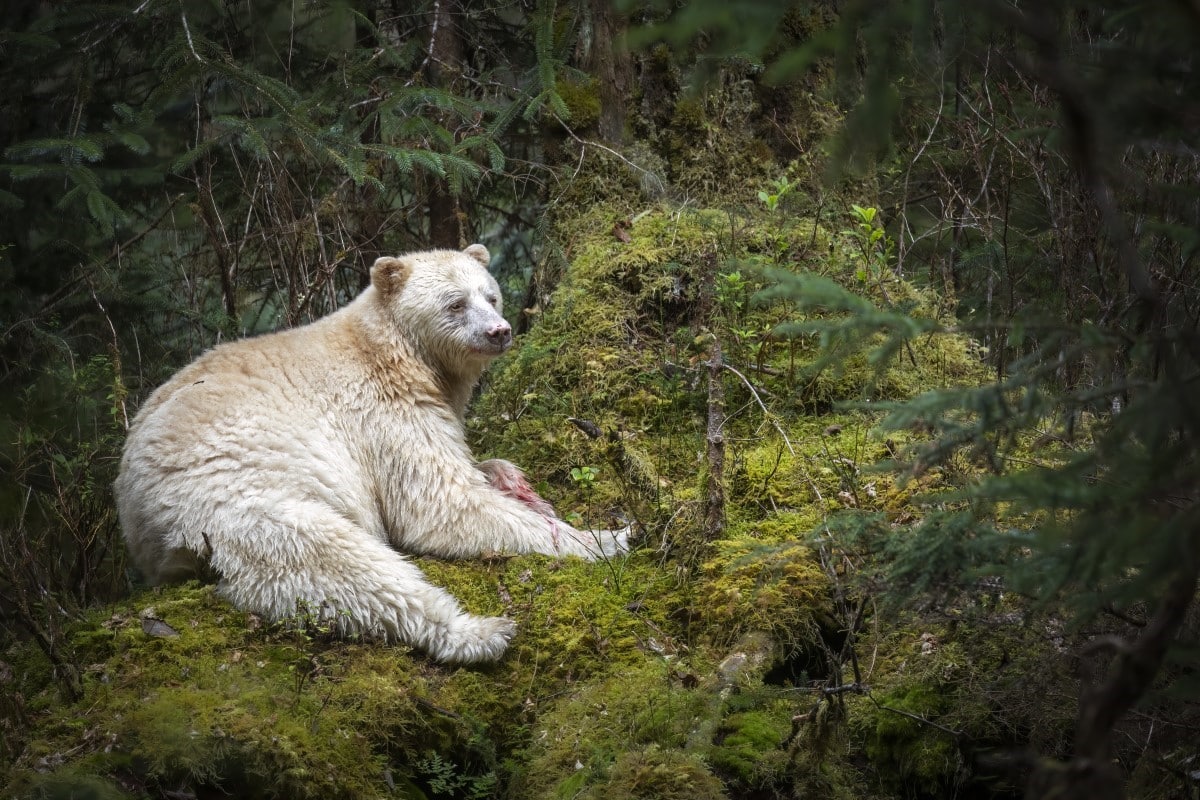
“A Throne of Moss” by Jack Plant.
“One reason that people may be so drawn to the spirit bear, besides its rarity, is that the white fur allows us to see their facial expressions. As opposed to a black bear whose face is hidden in the darkness of its coat. It allows us to feel we have a more emotional connection with the wild animal, as if we have a little insight into what the bear is thinking. It also may be the uniqueness of seeing an animal so contrasted to its environment, that the sheer sight of them alone is an extraordinary experience. This stunning white bear gives us an example of that, as he rests on this perfect throne of moss, surrounded by the blueish-green needles of the Sitka spruce nearby. His fur, brighter than anything else in the rainforest, only to be matched by the clouds above. A slight tinge of red stains his paws and upper lip from a previous feast of pink salmon, a sign of a well-fed bear. He lay here for a while, marvelling at the natural world around. His habitat is some of the most rugged and yet beautiful in the world, rich in biodiversity. As the spirit bear is a protected species, it consequently protects the lands all around, acting as a guardian for the very ground that it walks. In this case, specifically Princess Royal Island of British Columbia, the second largest island on the BC coast and home of the spirit bear, an “umbrella species”. In this photograph, there is a small stream between me and the bear. I knelt up on my own mossy cushion in order to get eye level with him, always keeping my movement slow and steady, bears are hyper-aware of movement, and during these memorable encounters, I do my utmost to make sure I am not taking away from any natural behaviors if at all possible.”
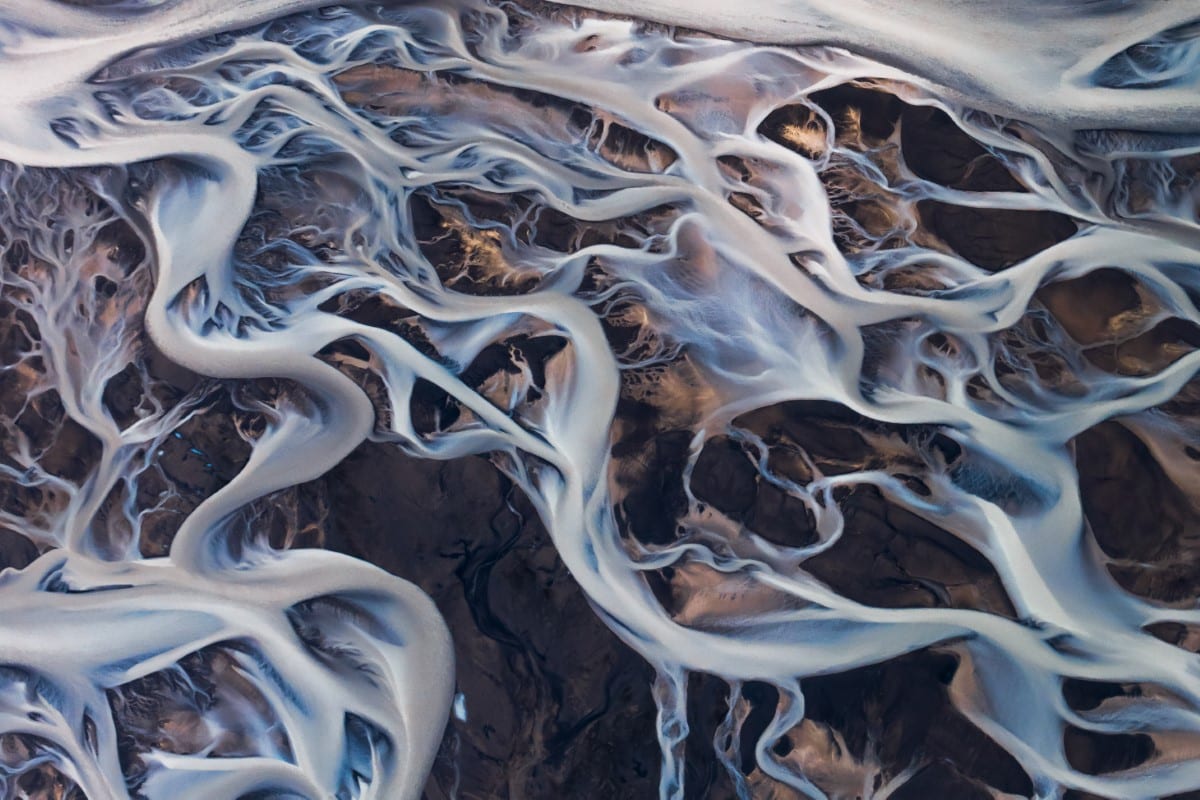
“Medusa” by Chris Byrne.
“Photographed from a small plane over the Tungnaá river in the highlands of Iceland.
This photograph was taken during my first flight over the highlands in Iceland to capture aerial images of these abstract glacial river systems in the highlands. I will admit that I’m a bit of a nervous flier and had never been in a plane this small before (a four-seater Cessna). Nor was I calmed by the pilot who looked to be about 22 years old. However, when we got up in the air and it was just the pilot and I communicating about where to go I was completely at ease. We flew north into Landmannalaugar and over this incredibly complex and intricate river system of the Tungnaá. I had never in my life seen something so abstract created by Mother Nature. From above, the water was so chaotic yet organized. With water tendrils snaking all around, up and over itself, the water seemed to move in every direction and the same direction all at once. Eventually reaching the ocean. The waters here come from melting glaciers and continuously change year over year.
With climate change and these glaciers receding, this may not seem like a lot, but the increase of this meltwater most certainly adds up. It is my intention to keep returning to document this from the air to be mesmerized and concerned, just like that very first flight when the wild and snaking river vividly reminded me of Medusa’s hair.”
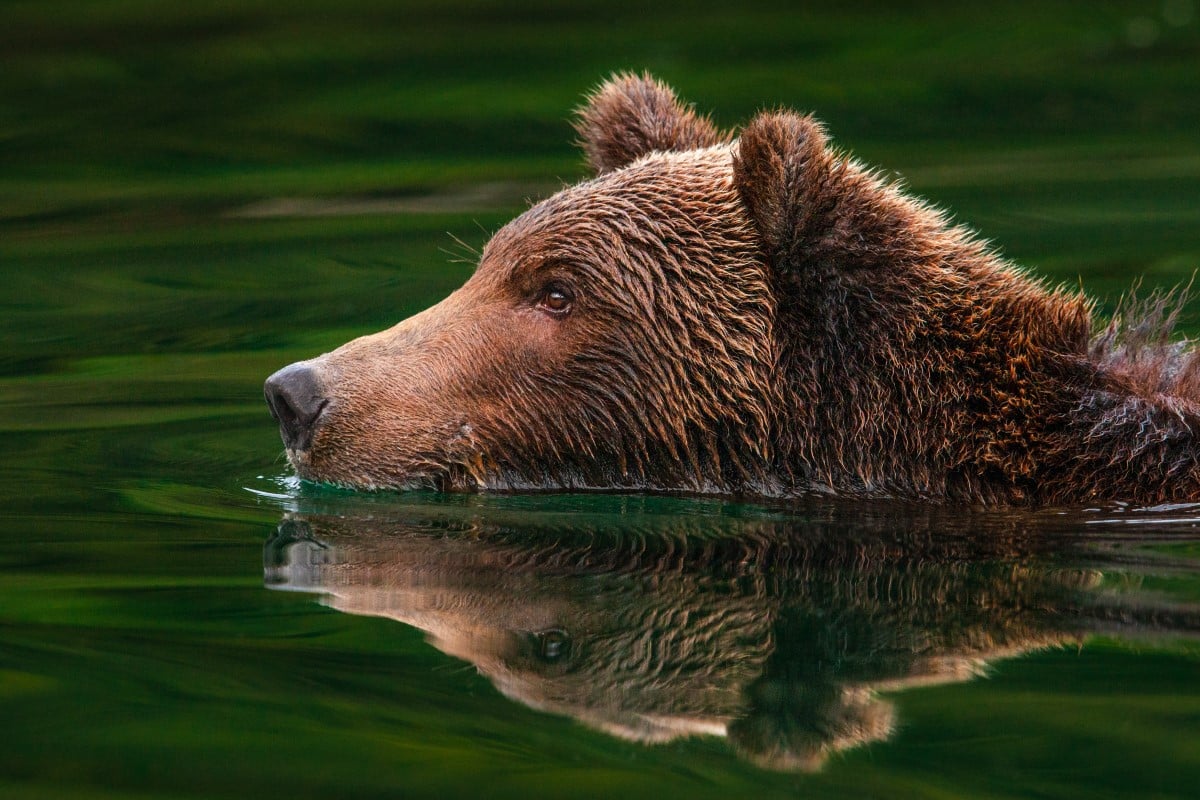
“Emerald Dreams” by Lianna Nixon.
“A young bear swims across a river mouth during high tide, following its sibling to find food across the way. Against their warm rich brown fur, the green river around illuminated like liquid emeralds, constantly in motion bringing about greens I never knew the names of, greens that felt endless in vibrancy and state of motion.”
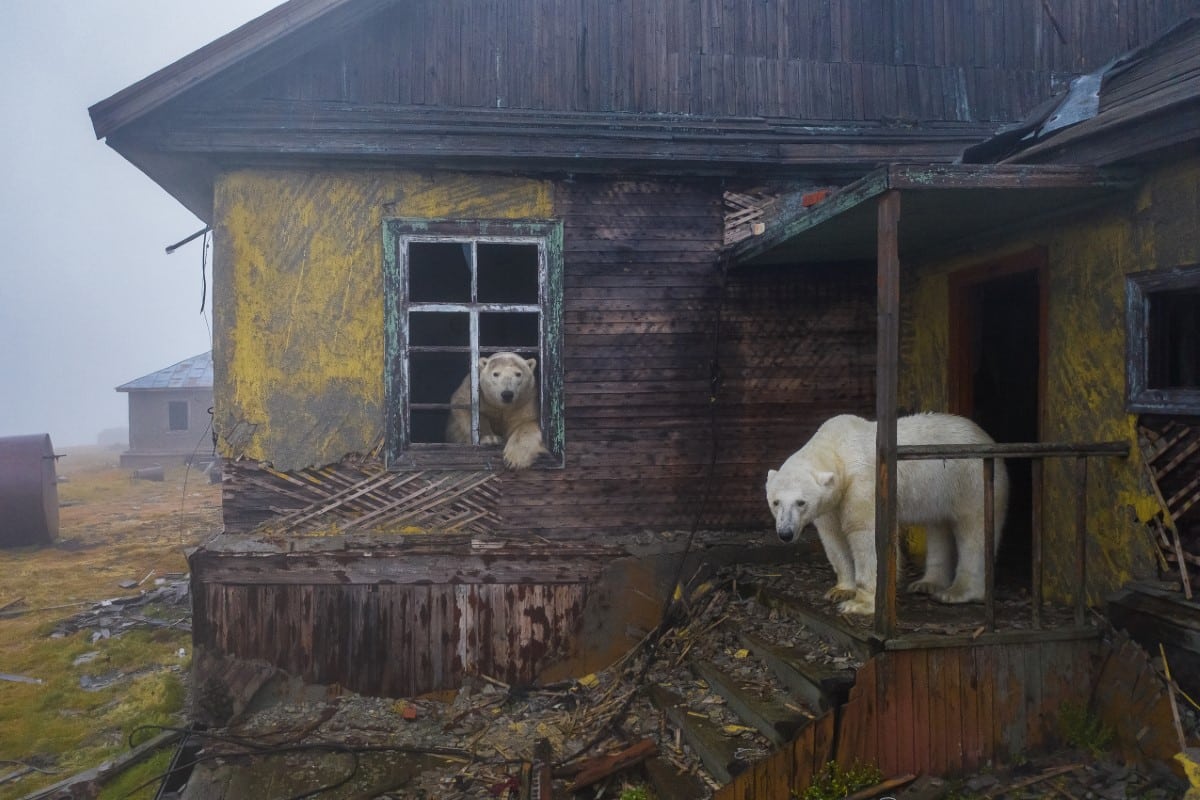
“House of Bears” by Dmitry Kokh.
“Kolyuchin is known for the polar weather station that operated on it in Soviet times. Though the station was closed in 1992, the abandoned village still stands on the island. The stormy wind, rain, and neglected buildings on the rocky shores all made everything appear super surreal. Suddenly, we noticed movement in the windows of the houses. Someone took out some binoculars, and we saw the heads of polar bears! The fog, a place long deserted by people, polar bears — it was the perfect setting. Bears are very curious by nature so they walked around the houses, checked every door, window, nook and cranny. There were about 20 animals in sight at the same time, mostly males. The females kept to the side with their cubs, closer to the shores of the island. The bears may look calm and sweet in these photos, but one must not forget that they are smart and incredibly powerful animals! As they probably thought the drone was some sort of bird, they did not let it out of their sight. Never one to miss a meal, they were probably ready to strike at any moment, even when seemingly chilling out on the grass! I shot from a drone equipped with low-noise propellers so as not to disturb them. I was very careful and very patient, and let the bears slowly get used to the drone so that eventually I was able to get closer and closer. Bears are very curious and were probably intrigued by this ”weird-looking bird”, which was amazing for me as they looked right into the camera. I think that these images of the polar bears on Kolyuchin island are very timely, they are like snapshots of a premonition reflecting what could be in our not-so-distant future. The world as we know it is very fragile, and the current state of the world – from political conflicts and nuclear tension to the climate crisis – means that the end could very well be nigh. These things are real, and if they continue as they are, the outcome will be catastrophic.”
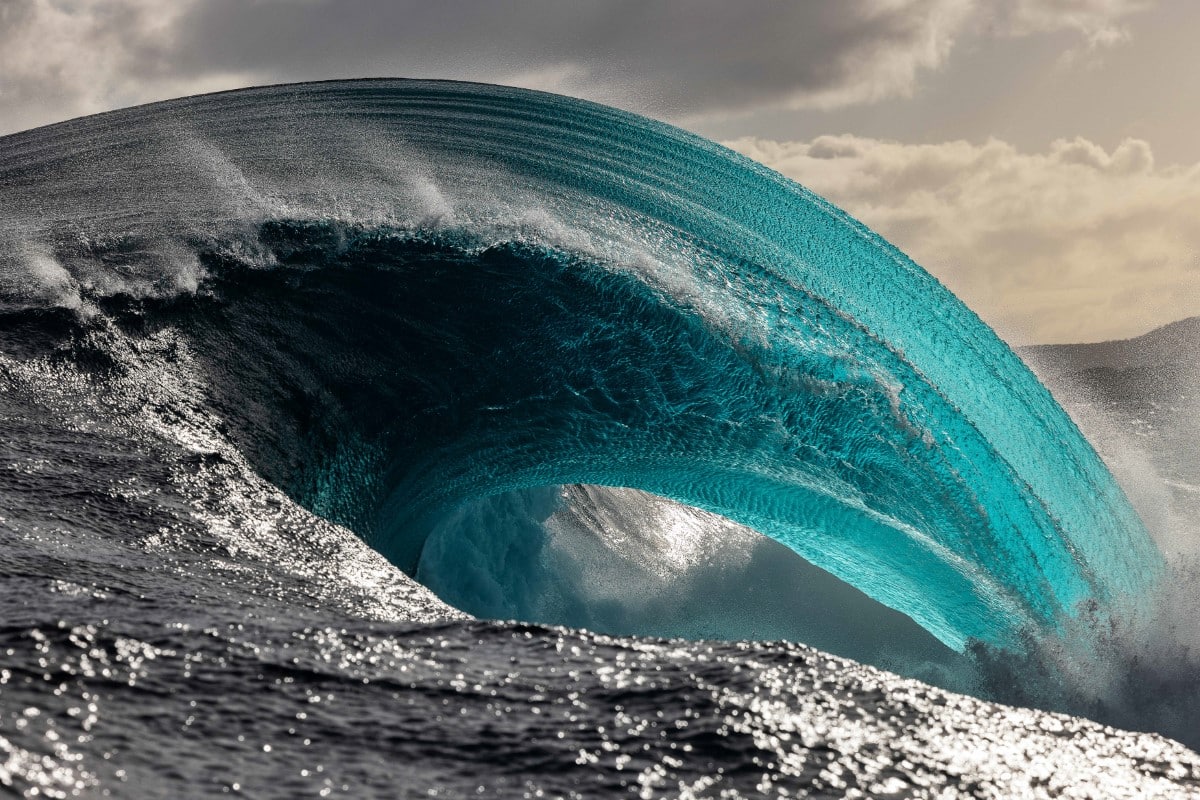
“Distance” by Andrew Semark.
“Coming off one of the biggest projects of my career, I found myself at a crossroads. I was unsure of what the future held after investing all my focus into a project. I had lost the direction and motivation to pick up the camera and create. I reached out to mentors expressing how I felt and was encouraged to learn it wasn’t unnatural. I was advised to take time out and just enjoy the accomplishments, and that the drive would come back. This is the image that helped bring my focus back. I spent the afternoon in large, windy conditions on a remote stretch of coastline. I had just upgraded my camera gear to the Canon R5 and Aquatech housing. I was using the 70-200 with a prototype zoom gear that was 3D printed. I don’t usually have moments (while shooting) that make me look at the image in the water. I remember, as this particular wave broke, the incredible blue color that was displayed in front of me. This is the moment that brought me back. The ocean rekindled my desire to continue to capture these heavy ocean moments on some of the most remote stretches of coastline in the world. A fresh direction and motivation to not give up. You got this.”
